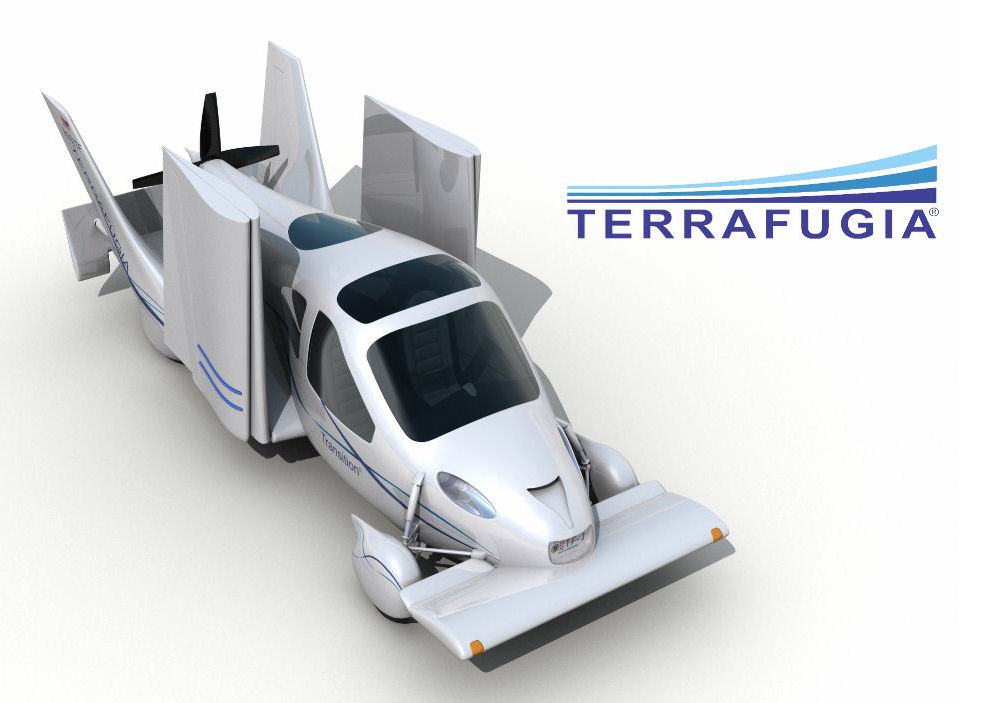For those who have watched cartoons when they were little (or still do!), ‘The Jetsons’ probably presented the first view into the future. Floating cities, housekeeping robots and of course, flying cars.
The flying car has eluded automotive engineers for a hundred years. When Anna Dietrich, CEO of Terrafugia (a company founded by a group of MIT students), realized that in trying to build a flying car, her team would face the same difficulties encountered by its predecessors, she knew it would take a change in perspective. Her idea was this: why not build an airplane that can drive? And then came the breakthrough.

The Transition – a plane that drives
Above is an image of the Transition, a two-seater aircraft that can be converted into an automobile. The challenges in designing this vehicle came not from figuring out how it would fly, but from how it would drive. One has to consider that this vehicle is predominantly an aircraft. Thus, the challenge the Transition faces is one of compatibility with national roads and assuring the highway officials that it meets all road safety requirements. By integrating key design features and undertaking intense digital simulations, the engineers at Terrafugia have passed these tests with flying colors.
One key design feature is the Transition’s foldable wing system. When in the air, the Transition’s engine channels power through a carbon-fiber shaft to the propellers. An airborne Transition can fly for a distance of 490 miles at a speed of 107 mph with a single tank fill-up. Post landing, the vehicle undergoes a breathtaking metamorphosis. When the pilot presses a switch from inside the cockpit, the wings fold in a time of less than 30 seconds! Once its wings have folded, this aircraft is fully road compatible. The Transition now adopts a continuously variable transmission that allows it go up to 65 mph on the road. Despite the vehicle’s dual compatibility, Terrafugia has stated that “it foresees the Transition spending no more than 15% of its time in that [road] mode”. This trade off between air time and road time is most likely due to the drag that the vehicle experiences due to its bulky structure and folded wings.
Nevertheless, Terrafugia has taken great measures to optimize its vehicle’s road performance. The company used an engineering simulation software called ANSYS to conduct intensive airflow tests. This software enabled it to make design changes that would “maximize wing lift in the air and to minimize the effects of crosswinds along the road”.
The second design feature that exemplifies the triumph of the Transition is its safety mechanisms. The vehicle is the first light aircraft to contain “dash-mounted airbags, a passenger safety cage and energy-absorbing crumple zones”. In addition, the Transition includes a full vehicle parachute for emergency situations. The Transition’s body and interior were designed entirely using SolidWorks. Intuitively, I believed that a vehicle behaves slightly differently in digital and real environments. According to Terrafugia however: “It’s interesting how much reality matches what’s in SolidWorks. If we were working with just physical prototypes, we’d end up sanding those unwanted details off the parts by hand.” This statement showed me how softwares like SolidWorks and AutoCAD are invaluable for engineers because they offer a cost-effective digital environment in which to create and test prototypes.

Model of the Transition created using Solidworks 3D
One would also imagine that safety while landing is a crucial characteristic for the Transition to have. To ensure that landing is smooth, engineers at Terrafugia used the CATIA Composites Design software to analyze weight distribution and stress across the structure. Furthermore, the software was used to test different materials to reduce the weight of the Transition as much as possible. Clearly, computer-aided design played a pivotal role in designing and optimizing the vehicle.

Transitioning from land to air
To conclude, if you want to avoid the notorious traffic jams of American highways, the Transition is your way out. It runs on regular unleaded gasoline and needs just 30 meters of runway space to take off, provided by the largely underutilized airspace across the country. However, the trade off is that a pilot’s license is required to operate this vehicle. Since this takes a lot of time and effort to obtain, most people might be discouraged purchasing the Transition. There is no doubt that this is a bold undertaking by Terrafugia, defying a century worth of failed prototypes. Dietrich perfectly sums up my take on the Transition: “As with many disruptive products, it is difficult to predict where this technology will take us in the future. But I believe that the Transition is the next major step in improving how we navigate our world.” Perhaps ‘The Jetsons’ future isn’t that far away.
Watch the Transition in action:
http://www.youtube.com/watch?v=KSpvw5PbMj8
TED talk by Anna Dietrich on the Transition:
http://www.ted.com/talks/anna_mracek_dietrich_a_plane_you_can_drive.html
References used:



